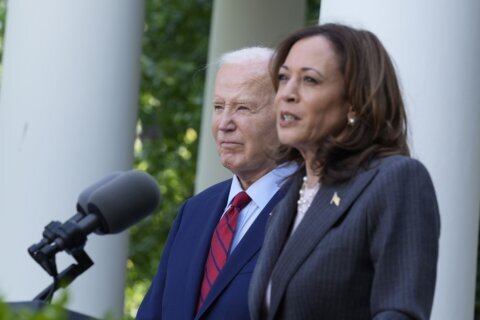Bonds make up the foundation of any successful retirement portfolio. These assets are debt-related instruments issued by governments and corporations that are looking to raise money. Think of them as the other side of the loan, where the “issuer” is the borrower and investors are collectively the lender.
Like any loan, bonds carry interest payments in addition to repayment of the principal amount — meaning this asset can provide a steady stream of cash back to investors. This makes them incredibly appealing, particularly for older investors looking for income to replace their paychecks once they stop working. They also tend to be much less volatile than stocks, making bonds ideal for capital preservation in retirement.
[Sign up for stock news with our Invested newsletter.]
“As stocks have gone down, historically bonds have gone up,” says Bill Waggoner, president and chief compliance officer at Stoney Creek Advisors in Rochester Hills, Michigan. For this reason and the income they provide, a 60-40 portfolio of 60% stocks to 40% bonds has been “a mainstay in financial planning for many years.”
This balancing act between stocks and bonds doesn’t always work, however. Waggoner notes that 2022 was a particularly hard year for both stocks and bonds as the Federal Reserve raised interest rates to combat inflation. But things are looking up for both stocks and bonds in 2023, and over the long term, diversification is still an investor’s best bet — especially in retirement when risk needs to be mitigated with income and capital preservation.
Unfortunately, building a diversified portfolio of individual bonds can be a complicated and opaque process. But thankfully, bond funds have democratized access to fixed-income markets by allowing even small-time investors to put as little as $100 behind the big-ticket loans to the U.S. Treasury department and leading banks, manufacturers and tech companies.
Not all bond funds are the same, however, and while they are easy to buy, they are also easy for retirement investors to misunderstand. Here’s a brief rundown of some of the top bond investments out there, including both mutual funds and exchange-traded funds, or ETFs, and what they have to offer:
| Bond fund | Yield (trailing-12-months) |
| Vanguard Total Bond Market ETF (ticker: BND) | 2.6% |
| Fidelity Flex Conservative Income Bond Fund (FJTDX) | 3.3% |
| Vanguard Short-Term Treasury ETF (VGSH) | 1.7% |
| iShares TIPS Bond ETF (TIP) | 5.5% |
| PIMCO Senior Loan Active ETF (LONZ) | 6% |
The Difference Between ETFs and Mutual Funds
The list of top bond funds differentiates between mutual funds and ETFs. But you may be wondering: “What’s the difference?”
The short answer is “not much.” Both ETFs and mutual funds are diversified baskets of assets, meaning investors can own a single investment instead of building a complicated portfolio of 1,000 stocks or 1,000 bonds. Keep in mind that both types charge a small fee for that service.
The main difference is that for mutual funds, all buying and selling happens once per day at a fixed price, while ETFs are bought and sold across the entire trading day. ETFs also tend to be a bit cheaper thanks to their recordkeeping and tax efficiency, and they often allow you to buy in for as little as $30 whereas many mutual funds require a minimum of $3,000. But for retirement investors who have decent nest eggs, these differences are far less important than making sure your bond fund or ETF meets your personal investing strategy.
The Biggest: Vanguard Total Bond Market ETF (BND)
The largest bond fund is available as both an ETF and a mutual fund. That would be the duo of the Vanguard Total Bond Market ETF and the Vanguard Total Bond Market Index Fund Admiral Shares (VBTLX) mutual fund.
Though the tickers and vehicle differ slightly, the strategy is the same, with each fund offering exposure to a mammoth portfolio of more than 17,000 different investment-grade bonds from U.S. government and corporate borrowers. This includes about 47% of assets in government bonds from the Department of the Treasury and others, about 20% in bonds from government-backed mortgage lenders like Fannie Mae and Freddie Mac, and 25% in top-rated corporations such as Amazon.com Inc. (AMZN) and American Express Co. (AXP). It’s not terribly sophisticated, but for investors who want a bit of the entire bond market, this fund is the way to go.
With a broadly diversified portfolio and a focus on the most creditworthy borrowers, this bond fund is as rock solid as they come. The current yield is 2.6%, meaning you’ll get paid back that portion of your initial investment over the next 12 months — even if the principal value remains unchanged.
As an illustration of the difference between bond ETFs and bond mutual funds, consider that the Vanguard Total Bond Market ETF charges 0.03% in annual expenses and is currently priced at under $80 for a single share, while the Vanguard Total Bond Market Index Fund Admiral Shares Mutual Fund charges 0.05% in annual expenses and has an investment minimum of $3,000.
If you have $3,000 to invest, you can buy either — and while the ETF’s fees are smaller, the 0.02 percentage point difference adds up to savings of 60 cents per year.
The Best Right Now: Fidelity Flex Conservative Income Bond Fund (FJTDX)
Of course, it’s worth noting that the changing interest rate environment has been very challenging for many bond funds. That’s because when rates go up, bond funds often lose value because the newer and higher-yielding assets are more attractive to investors than the older bonds these funds hold.
Case in point: VBTLX lost almost 14% in 2022 — better than the roughly 20% decline for the S&P 500 and offset a bit by the yield, but still a loss.
Meanwhile, the Fidelity Flex Conservative Income Bond Fund actually posted a small gain in an otherwise disastrous year for most other investments, despite having an incredibly low risk profile. You also get a payout of about 3.3% currently.
Its success is in part because the fund is very targeted, with a portfolio of less than 240 total bonds, and it runs at a much shorter duration than its peers. The strategy allows FJTDX to buy into very short-term bond investments then roll them off quickly before they can decline or before newer debt issuances steal the spotlight.
And if that’s not enough to sell you on this bond fund, it also comes with a zero expense ratio.
[8 of the Best Bank Stocks to Buy for 2023]
Find the Best Bond Fund for Your Investment Strategy
Of course, there’s a great big world of bond funds and ETFs out there. You don’t have to buy everything with a total bond fund like Vanguard’s, nor do you have to be super selective like the Fidelity fund. Whatever your personal tastes or risk tolerances, there’s sure to be an option that fits you and your retirement investing needs.
Here are a few other representative examples of what’s out there.
Vanguard Short-Term Treasury ETF (VGSH)
“In this environment, we prefer to invest in bond funds with a shorter duration,” Waggoner says. “We also prefer higher quality government and corporate bonds.”
To this end, he points to another short-term bond ETF: VGSH. The fund invests primarily in high-quality U.S. Treasury bonds. It currently holds 95 bonds with an average maturity of two years. For comparison, FJTDX’s ultra-short average maturity is 0.6 years.
The longer time to maturity leads to a fund that is more sensitive to interest rate changes, as measured by its longer duration of 1.9 years versus FJTDX’s duration of 0.31 years. Unlike FJTDX, though, VGSH invests entirely in government-issued bonds, making it arguably less risky from a default perspective.
VGSH is one of the best short-term government bonds, according to U.S. News & World Report rankings, with a low expense ratio of 0.04% and yield of just over 1.7%, as of March 31. It is also available as an admiral shares mutual fund (VSBSX) with a 0.07% expense ratio but a $3,000 minimum investment.
iShares TIPS Bond ETF (TIP)
An increasingly popular tool to hedge the risk of inflation in these challenging times is Treasury inflation-protected securities, or TIPS. These unique bonds have a direct tie to the rate of inflation as measured by the consumer price index. If inflation rises, the bond’s principal will rise proportionately so that longer-term investors can retain their purchasing power.
Over the last 12 months, this fund has averaged a yield of 5.5%. Of course, if inflation crashes then the yield will crater, too. But if your strategy is to offset inflation rather than to latch on to the highest yields, TIP may be worth a look.
It has an expense ratio of 0.19% and $22.6 billion in assets
PIMCO Senior Loan Active ETF (LONZ)
If you’re willing to take on a bit more risk for higher potential income, Waggoner says floating rate funds may be an attractive option.
“These are made up of bank loans rather than bonds and tend to be a hedge against rising interest rates,” he says.
He points to the PIMCO Senior Loan Active ETF as one option, which provides a current trailing-12-month yield of just over 6%. The fund invests almost all its assets in junk bonds, however, with less than 4% of the portfolio currently in investment-grade bonds, according to S&P.
As an actively managed fund, it also comes with a bit higher expense ratio of 0.5%.
More from U.S. News
Top 5 Stocks to Watch This Week
5 Great Fixed-Income Funds to Buy for 2023
7 Best Vanguard Bond Funds to Buy
5 Best Bond Funds for Retirement originally appeared on usnews.com
Update 05/08/23: This story was previously published at an earlier date and has been updated with new information.







